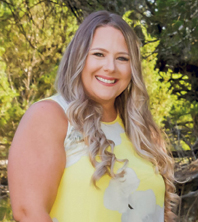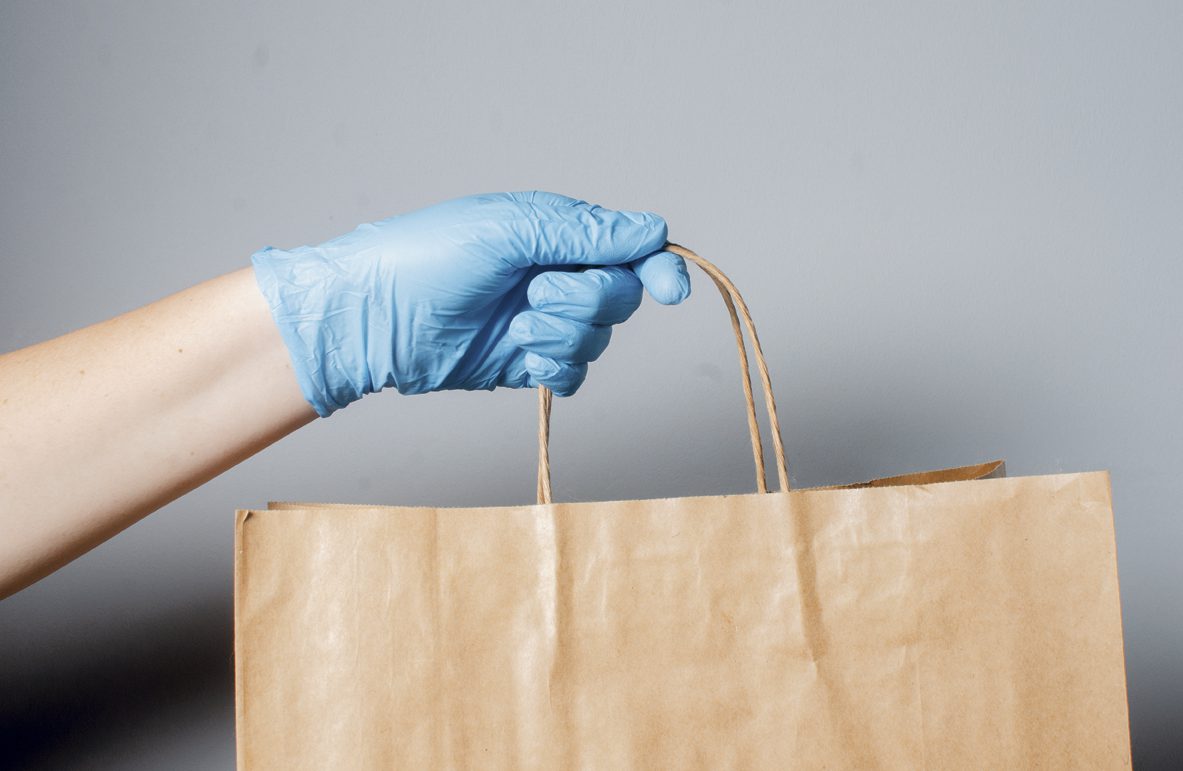Specialty Lines Markets
FOCUS ON THE RESTAURANT AND BAR MARKET
With dining rooms and gathering establishments closed, how has theCOVID-I9 pandemic affected the market?
By Lori Widmer
In almost every line of business and in nearly every industry, a pandemic changes just about everything. Market predictions from 2019—or even early 2020—are no longer relevant. In fact, the market’s outlook was recast almost instantaneously by an individually defined inflection point.
It can be argued that nowhere is that shift in “business as usual” more strongly felt than in the restaurant and bar industry. Across the country—across the globe, in many cases—restaurants and bars are shuttered. They’re also losing revenue as they await a reopening that could quite possibly be weak and untenable for some establishments.
Pre-pandemic, predictions were strong:
The National Restaurant Association was expecting industry sales to reach $899 billion, a 4% increase over 2019. But just three months into 2020, the reality was now here near that forecast. Restaurant365 data shows a one-month drop in restaurant sales of 78% for the month of March. In that same time period, year-over-year sales for restaurants that remain open have dropped around 60%.

-Derek Stinchcomb
Casualty Broker
All Risks, Ltd.
New, steep learning curves
“At the beginning of the pandemic, most places tried to increase their operation’s daily hygiene, but within a short time it was clear that this would not suffice,” says Derek Stinchcomb, casualty broker with All Risks, Ltd., who says COVID-19 has had “an enormous impact on the industry, its employees, and communities.”
Richie Manduca, vice president of NIF Group’s Multi-Lines division, says that impact could be significant. “It’s really hard to tell just yet, but I believe the pandemic will change the restaurant and bar industry drastic-ally. We have seen many requests coming in due to the closures within the industry as a result of state and government mandates. Some restaurants and bars are trying to adapt and stay open while just doing curbside pickup or delivery only.”
Manduca says closures have drastically reduced receipts, “with some restaurants and bars losing up to an anticipated 90% in sales a month. As a direct result, and depending on when each insured’s policy is expected to renew, we have been seeing many requests coming in asking for a reduction in exposures over growing uncertainty of how long this will last and how the eventual opening up again will affect restaurants and bars.”
With restaurants and bars being public gathering places, not having the ability to serve as social spots has hit the industry hard, says Stinchcomb. Instead, they’ve had to improvise. “Most of the RBT (restaurant, bar, and tavern) businesses, including smaller local bar and restaurant owners, have expanded their operations to include catering and delivery services to keep afloat, essentially pivoting their operations overnight.”
That may do little to staunch the bleeding, says Crystal Jacobs, vice president and program director with Restaurant Guard Insurance. “While restaurants can provide takeout or delivery options, the market simply isn’t there on a consistent enough basis for them to plan their supply purchases accordingly. Furthermore, those supply chains are dwindling as more food-related entities are impacted by COVID-19. The COVID-19 pandemic has required restaurants to not only change their playbook but really change the whole game.”
It’s also changed what business as usual will look like going forward. “I know that the ‘new normal’ has drastically changed the way we all conduct insurance business within the hospitality space, and we believe that at a minimum, 20% of the industry might not survive,” says Mark Derrenberger, CEO and managing director of the Hospitality Group for RMS Insurance Brokerage.
That’s because few in the industry expected or predicted the risks associated with a pandemic, Derrenberger says. While some had purchased communicable disease coverage, he says, that coverage is not available at the moment.
New customer behaviors
Customers also did not see coming the life-threatening risks that are now associated with any public gathering. That, say the experts, will surely change behaviors going forward. In a climate where industry changes cannot be predicted even six weeks out, there are some predictions the experts feel are clearly in the air. “What we do know is that delivery services will be permanently a part of the RBT industry landscape,” says Stinchcomb. “Its numerous options and convenience for the consumer are undeniable. If consumers weren’t using delivery services pre-COVID-19, they are sure to change that after the pandemic.” Also, automation is here to stay.
Derrenberger says many in the hospitality industry have “reinvented their venues” and are offering eGift cards to support their local communities, digital ordering, drive-up sales and curbside pickup, third-party delivery and waived delivery fees.

-Richie Manduca
Vice President, Multi-Lines Division
NIF Group
Emerging issues
Such a seismic shift in operations is bound to create issues, and Stinchcomb says there’s a potential gap in coverage with how—or if—general liability policies with hired non-owned auto (HNOA) coverage will respond.
Manduca says that there may be some leeway with carriers. But for how long remains to be seen. Some carriers, he says, are responding with allowances for the increased HNOA exposure for delivery. “If you didn’t have the coverage before, most companies are willing to add and underwrite for it via checking MVRs [motor vehicle reports] and putting a limit on radius of delivery (like under five miles).” He’s also seeing a $500-$1,000 average additional pricing for new HNOA coverage.
Automating business not only brings additional delivery-related risks, but Jacobs says it brings another threat: cybersecurity issues, which many restaurant owners may not be aware of. “Restaurant owners have to make sure they understand the dangers and the responsibilities they face when collecting sensitive customer data such as physical addresses, phone numbers, financial information and email addresses,” Jacobs says. “March alone saw a 600% increase in email phishing scams, whereby criminals send employees official-looking emails in an attempt to obtain account passwords, sensitive data or access to internal systems.”
Then there are the regulatory factors. Jacobs says that along with the new to-go model comes a shift by states to allow for to-go alcohol sales. “In most states, the concept of to-go alcoholic beverages has been completely disallowed,” she says. “I think we could see a shift in what is allowable post-COVID-19. I think it will be important to take a look back at the emergency regulatory changes that have been made to see what we stick with when we are all back to some sense of normalcy.”
One regulatory change that Derrenberger sees could be the most concerning exposure for the restaurant and bar industry. “The largest factor that looms in the regulatory realm is business interruption insurance where without direct physical damage most carriers are denying the civil authority claims,” says Derrenberger. “There are some state regulatory bills pending; however, the best solution would be a federal government backstop similar to the terrorism bill.”
The coverage picture
Whether such a backstop will happen remains to be seen. Meanwhile, finding coverage is about to get a bit more challenging. “There are certain reductions in limits and coverage, particularly business interruption where some carriers no longer entertain hospitality business,” says Derrenberger. “Also, those that do offer property coverage, unless there is building insurance involved, at times will not offer BPP (business personal property) and business interruption. There also continues to be a capacity issue for excess and umbrellas.”
Such hardening is going on in the casualty market as well, says Stinchcomb. In fact, the casualty side has been in a state of hardening for much of 2019. “No doubt there is an uptick in frequency claims, but severity trends from loss settlements are off the charts,” he says. “We’ve seen a few carriers exit the space completely or cease offering liquor liability coverage in certain states with unfavorable dram venues (establishments that sell alcoholic beverages). You can still find carriers to compete on the right risk, but the potential for a carrier to walk away from a deal if the premium doesn’t make sense is very common in today’s market.”
Stinchcomb says that recent claim activity is having an impact on exclusions, as well. Firearms, communicable disease, and reduced cover for assault and battery and abuse and molestation are “becoming more of the norm for a liability form set in the E&S space,” he says.
Even on products that were never intended to cover pandemic and communicable disease, Jacobs says she’s seeing exclusions being included on those policies anyway. Additionally, “I believe we will see changes in workers comp, employment practices liability and certainly business interruption coverages,” she says. “Depending on how temporary regulations pan out (meaning if they stick), you will see liquor liability and auto coverages affected as well.”
One potential area of expansion is in the HNOA space, says Jacobs. “We have already seen quite a few carriers and agents stepping up to the plate, expanding their hired and non-owned auto coverages for the industry. I’d like to see those expansions continue, as there has been a big need in the market in that particular space.”

-Crystal Jacobs
Vice President and Program Director
Restaurant Guard Insurance
Claim drivers
Still, claim pressures could keep competition low, particularly if states or the federal government make good on threats to force insurers to pay business interruption claims. Lawmakers in a number of states are looking to introduce bills that would force insurers to cover retroactively any business interruption claims brought on by COVID-19. While the ultimate outcome of any such moves remains to be seen, business interruption continues to drive claims activity at the moment.
“In our TPA (third-party administrator), the claim count on business interruption is high,” says Derrenberger. “It puts immense pressure on the infrastructures of both insurance carriers and agents/brokers due to the massive documentation requirements of processing claims.”
“In the environment we are in now, obviously business interruption claims are the biggest driver,” says Jacobs. However, her concerns extend to other potential hotspots. “My concern is what we haven’t seen yet—workers compensation, employment practices and even liquor liability—how has the exposure changed with the allowance of to-go containers? I think over the next 12 to 24 months we will see the true impact outside of simply the business interruption realm.”
Yet all the news is not bad. “As far as claim settlements for casualty, with less foot traffic there are fewer claims,” says Derrenberger. “With the courts now backed up, we are seeing plaintiff attorneys a little more likely to look for a settlement.”
While the industry will still be dealing with more garden-variety claims—slip-and-fall, food contamination, etc.—Stinchcomb says the most common claims will remain the “over-service of alcohol to patrons who then get behind the wheel. We have seen some very large settlements against bar owners, which often leads to the bar or restaurant closing their doors.”
Advice for agents and brokers
Considering the potential for huge repercussions, agents and brokers still have a tough sell ahead of them. The “it won’t happen to me” mentality is one that Jacobs has come up against too often. “One of the most frustrating things for me as an underwriter is having the knowledge that there were programs available that could have addressed the COVID-19 situation. Those of us who have been underwriting and managing communicable disease programs for restaurants have consistently heard the same reasoning for not purchasing coverage when we talk about it from a foodborne illness perspective—‘That has never happened to me.’”
And if the market wasn’t hardening before, it is now, says Manduca. “Agents need to be prepared for the turn in the marketplace. The shift to the hard market is happening now. The large catastrophic events on the property side and the unprecedented jury verdicts on the liability side have shifted the market. Now’s the time for agents to get in front of their clients and explain to them how this will affect their future coverage and pricing.”
Even with the situation that many clients find themselves facing, agents and brokers need to tread carefully. “I think the biggest thing agents need to avoid right now is commenting or lamenting about how they think a policy should respond,” says Jacobs. “Encourage your insureds to submit claims under all of their policies out of an abundance of caution. Stay in contact with both your insured and the claims team throughout, following up with both to make sure communication is open between all parties regardless of what the coverage outcome will be.”
Just don’t expect it to be easy going for a while, she adds. “Right now, the sales situation with restaurants is tough. It is going to be tough for the foreseeable future. Agents need to have some hard conversations with their clients about discretionary coverage purchases in a time where an already tight margin has nearly disappeared. Agents should arm themselves with impactful data while being empathic to the plight that their client is in. It’s not about scare tactics—we are past that point. We are in the real scenario. It needs to be a heartfelt conversation—‘we never thought a pandemic could affect us like this; what else can impact our bottom line? What has been dismissed as an exposure previously?’”
It’s all part of remaining a valued resource for your clients, suggests Stinchcomb. “Advise clients to buy adequate excess limits, citing recent judgments and claims activity. Retailers can offer help with risk management and help RBT owners with proper training programs such as alcohol training (TIPS [Training for Intervention Procedures] or similar), security training for bouncers, and ID checkers.”
That’s the kind of direction that Manduca says is needed right now. “As many already do, retail agents and brokers can point out to their clients where there is the potential for claims coming from within their industry and help their clients to understand how to bring down a potential exposure that could result in a claim against them.”
For Derrenberger, there’s one definite focus agents and brokers should have: “Communication, communication, and more communication. Stay in constant contact with clients about their claims and distill all the data and convert it into a usable strategy.
“We know things will ultimately change,” Derrenberger says. “While in a number of areas of insurance, we have seen limits and coverage slashed, it will be those agents/brokers who adapt and create who will be the new market makers.”
For more information:
All Risks, Ltd.
www.allrisks.com
NIF Group
www.nifgroup.com
Restaurant Guard Insurance
www.restaurantguardinsurance.com
RMS Hospitality Group
www.rmshg.com
The author
Lori Widmer is a Philadelphia-based writer and editor who specializes in insurance and risk management.






